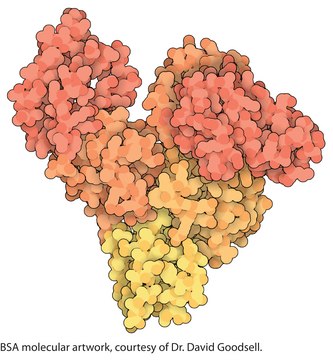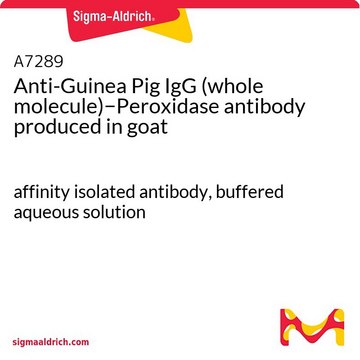B3528
BSK-H Medium
With sodium bicarbonate and HEPES, liquid, sterile-filtered, suitable for cell culture
Synonym(s):
BSK-H Medium Solution, Barbour-Stoenner-Kelly medium, Cell Culture Medium, Medium for Cell Culture
Sign Into View Organizational & Contract Pricing
All Photos(1)
About This Item
UNSPSC Code:
12352207
NACRES:
NA.75
Recommended Products
Product Name
BSK-H Medium, With sodium bicarbonate, suitable for Borrelia burgdorferi (Qualified)
Quality Level
sterility
sterile; sterile-filtered
form
liquid
suitability
suitable for Borrelia burgdorferi (Qualified)
application(s)
food and beverages
components
NaHCO3: 2.2 g/L
glucose: 6.0 g/L (Dextro)
phenol red: 0.02124 g/L
HEPES: 6.0 g/L
shipped in
dry ice
storage temp.
−20°C
Application
BSK-H medium is a standardized complex medium designed to support the growth of the Lyme disease spirochete, Borrelia burgdorferi. To standardize the procedure for isolating and culturing Lyme disease spirochetes, Pollack, RJ et. al. modified the composition of the medium generally used for this purpose (BSK-II) and developed a system for its distribution. This medium contains no gelatin or agarose, and various components are used in proportions that differ from those in BSK-II. Each of the major proteinacious components was screened by substitution in samples of the complete product. The final medium was evaluated for the capacity to grow related spirochetes including Borrelia burgdorferi N40, Guilford, and JD-1 as well as strains of Borrelia hermsii (HS-1) and of Borrelia coriaceae (CO53). Standardized medium, supplemented with prescreened rabbit serum, facilitates comparison of research results between laboratories and may eventually permit definitive clinical diagnosis of Lyme disease based on demonstration of the pathogen. The standardized medium is designated BSK-H.
Formulation for the growth and expansion of the Lyme desease spirochete, Borrelia burgdorferi
Preparation Note
1. BSK-H Medium is supplied as a sterile-filtered liquid. After thawing, mix well by inverting the bottle prior to use. If the thawed medium will not be used within a few days it is recommended that the medium be refrozen in working aliquots to avoid repeated free-thaw cycles.
2. Prior to use, we recommend that the medium should be supplemented aseptically with prescreened, sterile-filtered serum to a final concentration of 6%. (See note below)
3. Other supplements may be added aseptically as desired. The nature of the supplement may affect storage conditions and shelf-life of the medium.
NOTE: For best results, serum used to supplement the medium should be prescreened for its ability to support the growth of Borrelia burgdorferi. Prescreened, sterilefiltered Rabbit Serum [Product No. R7136] is available from Sigma.
2. Prior to use, we recommend that the medium should be supplemented aseptically with prescreened, sterile-filtered serum to a final concentration of 6%. (See note below)
3. Other supplements may be added aseptically as desired. The nature of the supplement may affect storage conditions and shelf-life of the medium.
NOTE: For best results, serum used to supplement the medium should be prescreened for its ability to support the growth of Borrelia burgdorferi. Prescreened, sterilefiltered Rabbit Serum [Product No. R7136] is available from Sigma.
Recommended products
For best results, serum used to supplement the medium should be prescreened for its ability to support the growth of Borrelia burgdorferi. Prescreened, sterile filtered Rabbit Serum [Product No. R7136] is available from Sigma.
also commonly purchased with this product
Product No.
Description
Pricing
supplement
Product No.
Description
Pricing
Storage Class Code
10 - Combustible liquids
WGK
WGK 3
Flash Point(F)
Not applicable
Flash Point(C)
Not applicable
Choose from one of the most recent versions:
Already Own This Product?
Find documentation for the products that you have recently purchased in the Document Library.
A G Barbour
The Yale journal of biology and medicine, 57(4), 521-525 (1984-07-01)
The successful isolation and cultivation of Lyme disease spirochetes traces its lineage to early attempts at cultivating relapsing fever borreliae. Observations on the growth of Lyme disease spirochetes under different in vitro conditions may yield important clues to both the
R J Pollack et al.
Journal of clinical microbiology, 31(5), 1251-1255 (1993-05-01)
To standardize the procedure for isolating and culturing Lyme disease spirochetes, we modified the composition of the medium generally used for this purpose (BSK-II) and developed a system for its distribution. This medium contains no gelatin or agarose, and various
O Brorson et al.
Infection, 25(4), 240-246 (1997-07-01)
The purpose of this study was to evaluate the behaviour of Borrelia burgdorferi under controlled conditions. The occurrence of cystic forms of Borrelia burgdorferi in vitro was noted, and these cysts were able to be transformed to normal, mobile spirochetes.
X Frank Yang et al.
Infection and immunity, 76(10), 4439-4444 (2008-07-30)
The availability of microbial genome information has provided a fruitful opportunity for studying regulatory networks in a variety of pathogenic bacteria. In an initial effort to elucidate regulatory networks potentially involved in differential gene expression by the Lyme disease pathogen
Gary P Wormser et al.
Clinical infectious diseases : an official publication of the Infectious Diseases Society of America, 47(7), 910-914 (2008-08-30)
A potential concern with any serologic test to detect antibodies to Borrelia burgdorferi is whether the epitopes incorporated in the test provide sufficient cross-reactivity to detect infection with all of the pathogenic strains of the species. This is a particular
Our team of scientists has experience in all areas of research including Life Science, Material Science, Chemical Synthesis, Chromatography, Analytical and many others.
Contact Technical Service



